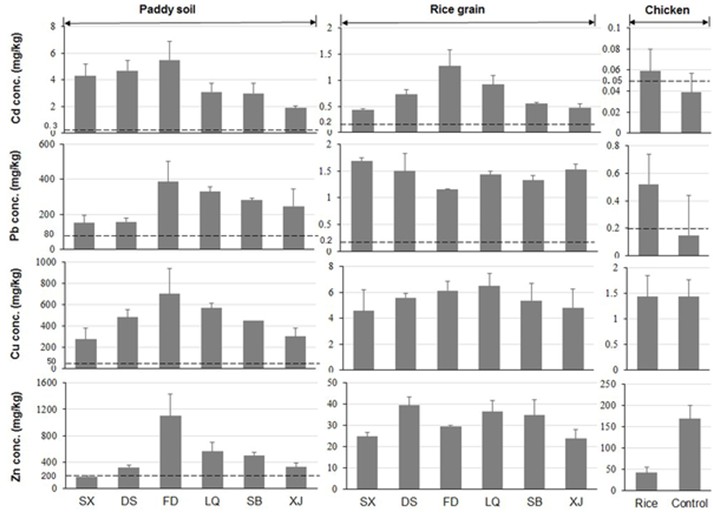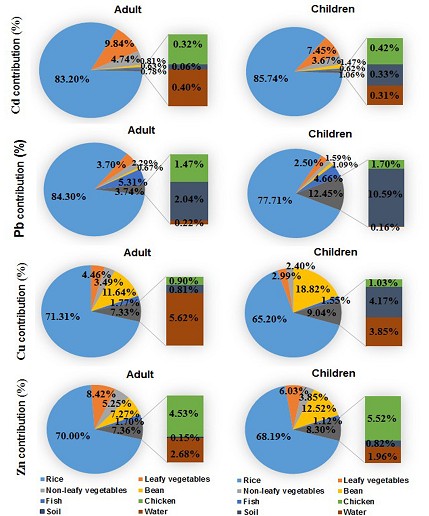

Heavy metal contamination by mining is a major environmental concern on a global scale. As a result, health related incidents caused by heavy metal pollution in China have risen sharply since 2005, with major accidents attracting nationwide attention. It was reported that high Cd in rice on the Chinese market was mainly the result of contaminated fields affected by AMD.
Dr. ZHUANG Ping and their colleagues found that the concentrations of Cd and Pb in some food crops (rice grain, vegetable and soybean) samples were significantly higher than the maximum permissible level. The Cd and Pb concentrations in half of the chicken and fish meat samples were higher than the national standard. The intake of rice was identified as a major contributor to the estimated daily intake of these metals by the residents. The hazard index values for adults and children were 10.25 and 11.11, respectively, with most of the estimated risks coming from the intake of home-grown rice and vegetables.
This study entitled “Multiple Exposure and Effects Assessment of Heavy Metals in the Population near Mining Area in South China (DOI: 10.1371/journal.pone.0094484)” was published online in Plos One on Apr 11, 2014. This work was supported by the grants from the National Natural Science Foundation of China.

Figure 1 Comparison of concentrations (mg/kg, mean ± SD) of Cd, Pb, Cu and Zn and their respective Chinese national quality value (dotted line) in paddy soil, rice grain and chicken muscle samples collected at different localities in the vicinity of Dabaoshan mine.


